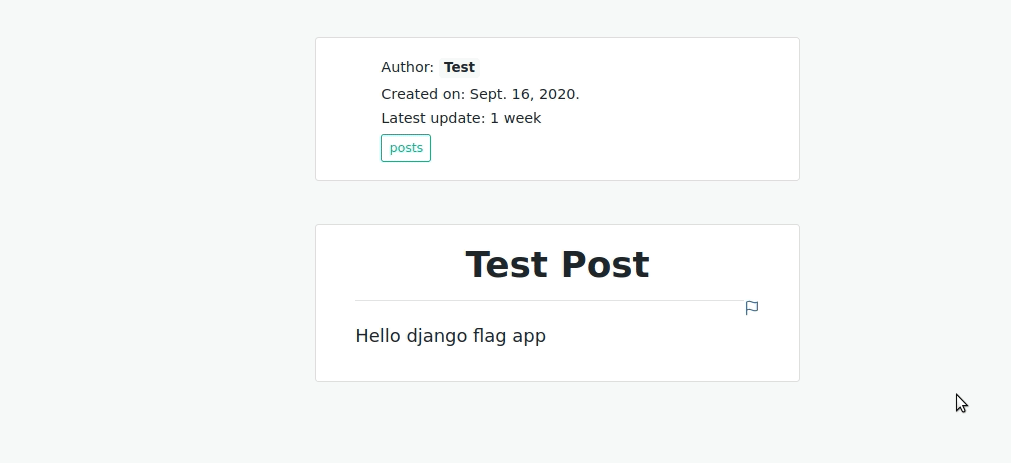


A pluggable django application that adds the ability for users to flag(report or moderate) your models.
For complete documentation you may visit Read the Doc. or see the docs directory.
Install using pip
$ pip install django-flag-appIf you want, you may install it from the source, grab the source code and run setup.py.
$ git clone git://github.com/abhiabhi94/django-flag-app.git
$ cd django-flag-app
$ python setup.py installTo enable django_flag_app in your project you need to add it to INSTALLED_APPS in your projects settings.py file:
INSTALLED_APPS = (
...
'flag',
...
)In your root urls.py:
urlpatterns = patterns(
path('admin/', admin.site.urls),
path('flag/', include('flag.urls')),
...
path('api/', include('flag.api.urls')), # only required for API Framework
...
)Run the migrations to add the new models to your database:
python manage.py migrate flagIn models.py add the field flags as a GenericRelation field to the required model.
E.g. for a Post model, you may add the field as shown below:
from django.contrib.contenttypes.fields import GenericRelation
from flag.models import Flag
class Post(models.Model):
user = models.ForeignKey(User)
title = models.CharField(max_length=200)
body = models.TextField()
# the field name should be flags
flags = GenericRelation(Flag)Important
the name of the field should be flags.
If you want to use web API, this step is not required. See further instructions at Web API.
render_flag_form tag requires 3 required positional arguments:
- Instance of the targeted model.
- User object.
- Request object
To render the flag form for a the instance post, place this inside your detail view, perhaps in some template of the sort postdetail.html.
{% render_flag_form post user request %}Please see the instructions at Contributing.rst.
